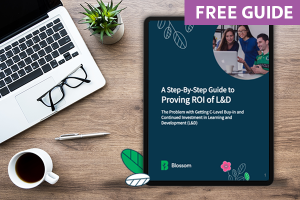If you’re not yet familiar with a learning management system (LMS), let’s start by explaining what it is and, perhaps more importantly, what it isn’t.
Put simply; an LMS is a powerful digital platform tailored to the unique learning needs of each business. LMS software makes learning more organised, accessible, and interactive. Users can access educational materials, such as videos, quizzes, and interactive exercises, communicate with other users, track progress, and much more, through a computer or mobile device.
LMS software is primarily a tool for course authoring, organising, and delivering educational content. It relies on the knowledge of learning and development (L&D) professionals or AI to develop learning materials. An LMS provides a platform to host and distribute these resources but does not generate content automatically.
What an LMS can’t do is fully replace face-to-face learning. While an LMS facilitates online communication and collaboration, it cannot fully replace the experience of face-to-face interaction with course facilitators and other learners. In-person discussions and physical demonstrations may still be necessary for specific subjects or activities, for example, learning how to operate machinery in the manufacturing industry.
Nonetheless, LMS technology offers ample opportunities for blended learning when part of the training requires physical interaction and other parts can be completed online.
So, let’s dive in and look at Cornerstone Learning first. This guide will give an overview of five Cornerstone alternatives in the UK. Select the right LMS for your business needs.








